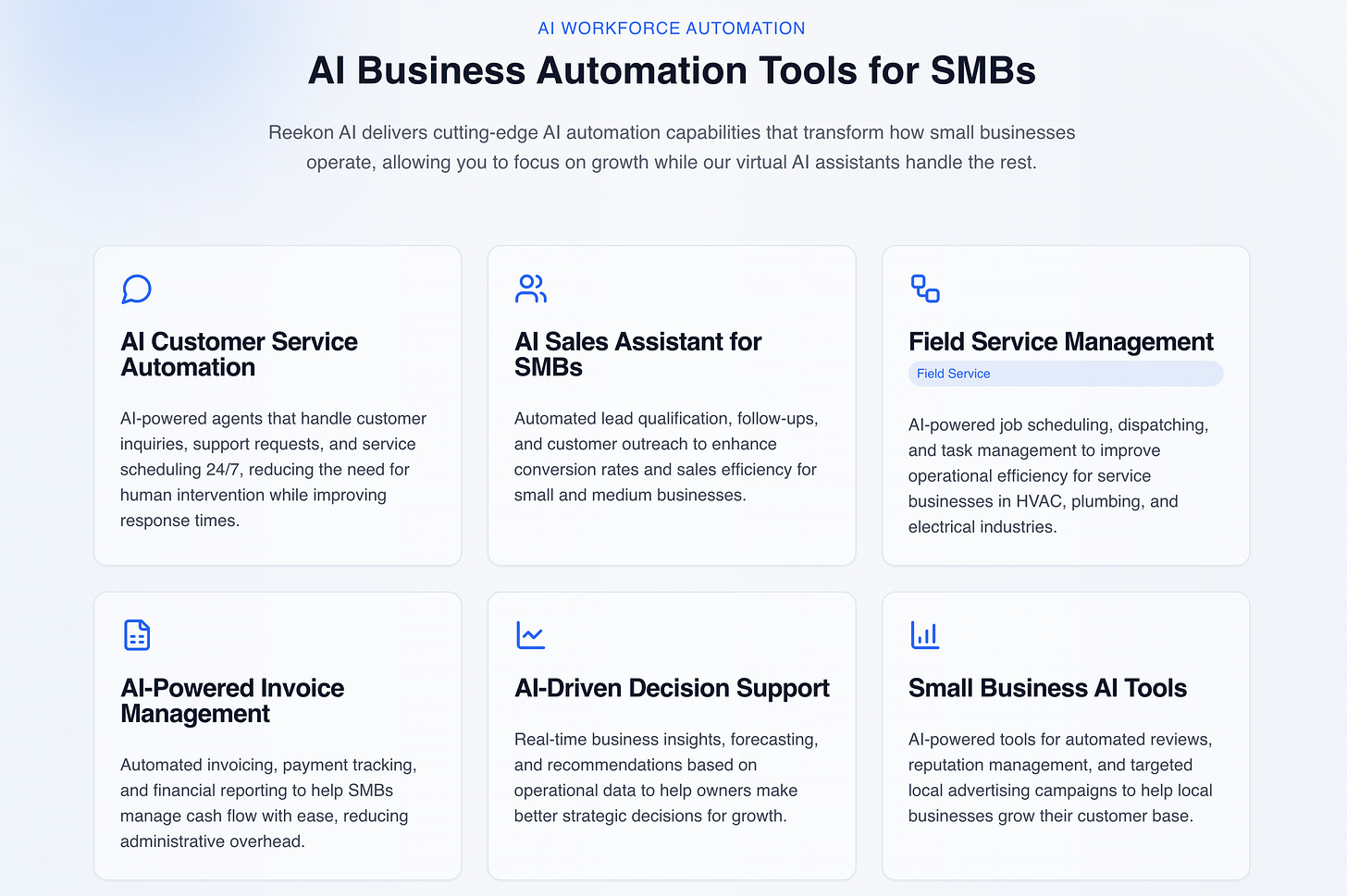SMB15 Newsletter - April 2025
A recap of the tactics, learnings and industries discussed in my latest interviews with folks buying, operating and investing in small businesses.
Welcome to this month’s edition of the SMB15 Newsletter, a monthly recap of learnings and tactics from interviews with small business owners, operators and investors.
Top Learnings this Month
Here are the latest tactics and insights from the SMB15 interviews in April.
1. Know Your Metrics
The best operators are quick to respond whenever I ask, “what are the numbers that matter?”
In my conversation with Scott Kandel, CEO of Royal Flush, he quickly listed the key metrics he focuses on:
Units-in-field (UIF) - How much plastic does he have deployed on-site?
Touches per Week - How many cleanings is he doing on average? The more cleanings, the higher the revenue per unit.
Route Density - What is the average number of units per site? The lower the transit costs, the better the margins.
Since acquiring the business, he’s been able to grow to over 2,000 units-in-field with more touches per week and a lot better route density.
2. The $1.2T Infrastructure Bill
When Jeremy left his job as a corporate M&A attorney, he wanted to find a sector that had strong tailwinds for years to come. Just around the same time, the $1.2 trillion Infrastructure Bill came out.
“I liked the runway that we had ahead of us. I liked the idea of having sort of a surefire idea of like, hey, here’s how much money is coming into the sector. Here’s what the near term looks like.” - Jeremy Tomes, Prime Contractor Supply
The purpose of the bill is to drive infrastructure improvements across the nation. Much of our infrastructure is aging and past the useful life. The true costs are much greater than $1.2T but the bill was a start in the right direction.
The way the funds show up in the local economy is through low-interest loans and grants tied to large-scale infrastructure projects, whether they are federal, state, municipal or country projects.
For Prime Contractor Supply, this means a strong stream of government contracting work for decades to come. Talk about a tailwind.
3. Converting Project Revenue into Recurring Revenue
Even creative services can be built for predictability. Get the brand work, and recurring retainer revenue follows.
Joe’s acquisition of Point B Communications—a creative agency with roots in hospitality—highlights how a strong brand offering fuels downstream services like ad buying and print production. By starting with strategic branding, Point B positions itself as a full-stack growth partner.
“Once you’ve got a brand, now we need a website... now we need to promote that website... and now we need collateral that backs up the brand.” – Joe Soelberg, Point B
With 80–85% of revenue now recurring, Point B’s three-legged stool of creative services, media buying, and print production creates resilience and expansion room. It’s a strong playbook for agencies—or any service business looking to rebalance project work with annuity-like income.
4. The Talent Gap in the Trades
While capital and customers are abundant in the home services space, mid-career technician talent is often the bottleneck—and Dominick is running into it firsthand.
As the owner of multiple HVAC businesses in Southern California, Dominick describes a labor market that’s split between older techs with deep knowledge but low physical drive, and younger techs with a lot more energy but less discipline or experience.
“You either have the very experienced folks who are maybe in their late 50s or 60s—they don't want to go on the road... Or you have the young, Sprite, excited new technicians... There's a disparity between the two.” — Dominick Blue, Nostra Group
Beyond the age gap, there is also a cultural divide between the two. Seasoned techs sometimes “gatekeep” information, while the Gen-Z employees expect their opinions to be heard, even without time in the trenches.
“Coming from the Marine Corps, I'm like, you've been here five minutes—maybe wait before having an opinion,” Dominick said.
4. Sometimes Starting from Scratch Isn’t an Option
In some industries, the only real way in is to acquire an existing business. That’s especially true in industrial supply and manufacturing, where relationships, lead times, and capital requirements form a high wall around incumbents.
Many manufacturers will avoid working with up-start distributors. They worry about diluting their brand and creating issues with existing distributor relationships. They want partners who have an existing footprint, a strong reputation, and a flow of business.
The same logic applies to the manufacturing side. The startup costs are in the millions and it takes years to get operational. You have no guarantee of breaking even, let alone capturing market share and striking good distribution partnerships.
“Building a plant takes years. Operations within that plant take another year. And then maintenance and meeting your KPIs—it takes time and costs a lot of money... Not many small shops can do it.” — Jeremy Tomes, Prime Contractor Supply
By acquiring an existing business —with supplier relationships, trust from prime contractors and government agencies—you’re able to bypass the cold-start problem.
5. How AI Can Be Applied to SMBs
Having acquired two HVAC businesses, Dominick is now spending a decent amount of his time on Reekon.AI. The goal is to partner with small business owners and help them modernize their businesses with AI.
“I'll bucket it into three themes. One is margin growth. Another is reduction in expenses. And the third one, and to me, this is the most important one, at least from my experience and the experience of, you know, friends that I have is the ability to get back time.” — Dominick Blue, Nosta Group
On the margin growth side, there are many tools that allow you to augment revenue-driving functions like quote generation, route planning, etc. By improving turn around and getting more jobs per tech, you can drive higher margins without adding headcount.
Aside from growth, there are often back-office tasks such as invoicing, collections or triaging customer service tickets, that can be largely automated, driving down operational expenses. The benefit here is most intense for operators who are acquiring multiple SMBs and pushing to centralize backoffice services across their companies.
The area Dominick recommends most folks start is on time recovery. Whether it’s pre-drafting responses to emails or call routing, many of the AI tools can help you delegate a lot of the day-to-day noise and free yourself up to focus on what matters, whether that’s hiring, sales, or partnerships.
Elsewhere in Small Business
Buying a Business is a Meme 🧵
Johannes breaks down the risk in acquiring a business, and why EtA is not the get-rich-quick scheme many folks think it is.The Power and Risk of the Earnout ✍️
Eli Albrecht breaks down how to use an earn out, the common negotiation points, and what happens when litigators get involved.
Guide to Acquiring Accounting Firms ✍️
The Mainshares team interviewed a number of folks who acquired accounting agencies to generate a guide on do’s and don’ts.
Small Business Humor
The latest
If you’re finding this newsletter half-way decent, share it with a friend, and consider subscribing if you haven’t already!
You can subscribe to our Youtube to stay up to date on more SMB interviews, or follow the podcast on Spotify.
Thanks,
Will










